
Spring Fed Water System "The Fountain of Youth"
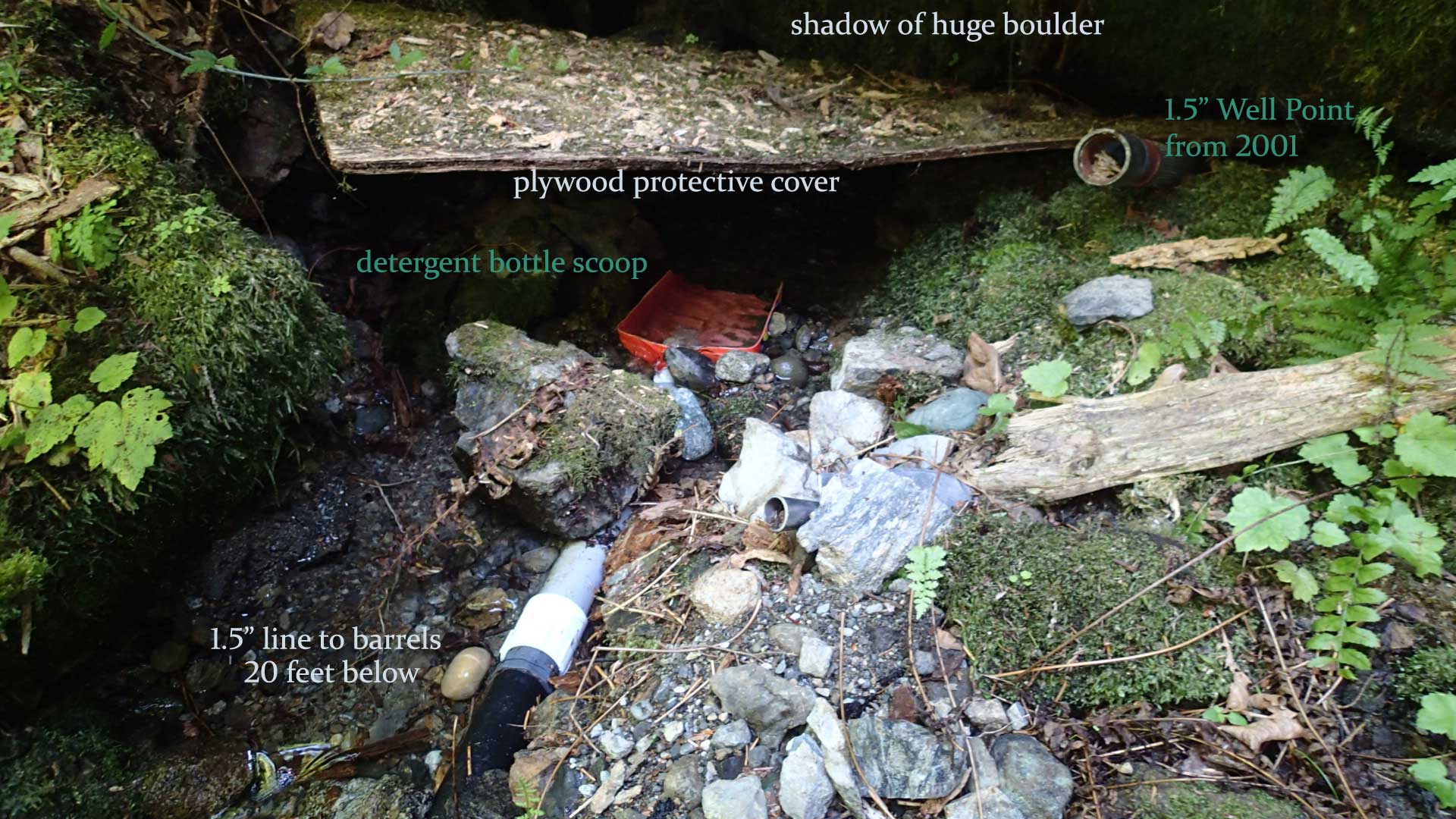
The Fountain of Youth Spring
Bubbles out from underneath a huge boulder the size of a VW
This detergent bottle was modified as a scoop or weir. another view
Located 250' up the side of a hill on the northeast part of the property, this spring supplies our tree farm with loads of fresh, clear spring water. The "Fountain" was discovered by Earl Ingebright in 1958 as he explored his new property. The Ingebright's then built and maintained a trail to the large boulder on the hillside in a stand of 100 year old Fir. The water was tested and found to be extremely pure. They laughingly named it the Fountain of Youth and told people "not to drink too much of it". In 2001 we drove a well point into the area where water comes up but it did not yield any flow. wiki on origins of of the fountain of youth.
This was a stop on hiking tours. An old camping cup was hidden under a clump of moss and visitors were offered a "taste". In 1994 the Ingebright's decided to run a pipeline from the spring to the main house. A major engineering endeavor, it made for a fun project. The actual pipeline consists of about 1/2 mile of 1 1/4" Poly pipe buried under the tree farm service road. Average pressure is 30PSI. ...And no pump! A small bypass pipeline keeps water to the house fresh.
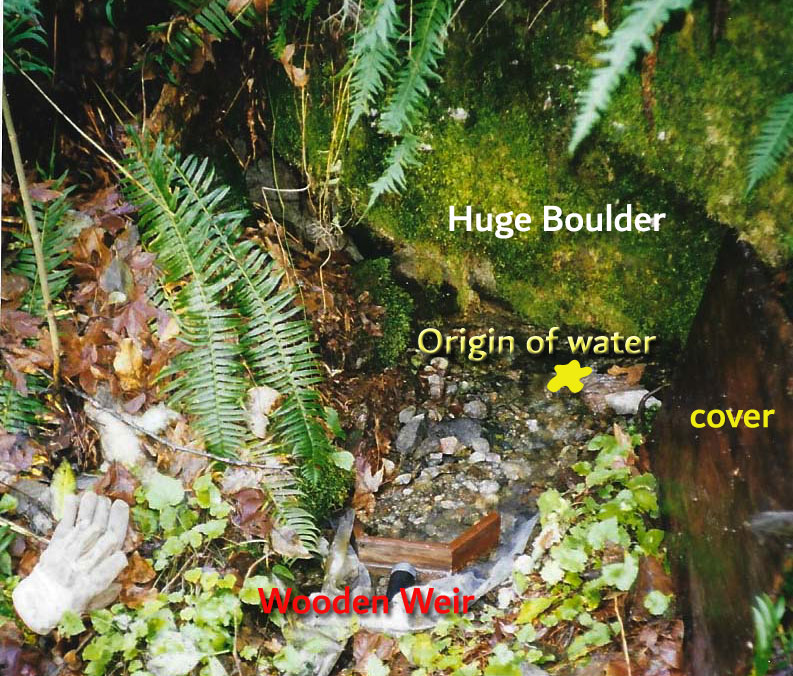
Early shot of the weir system
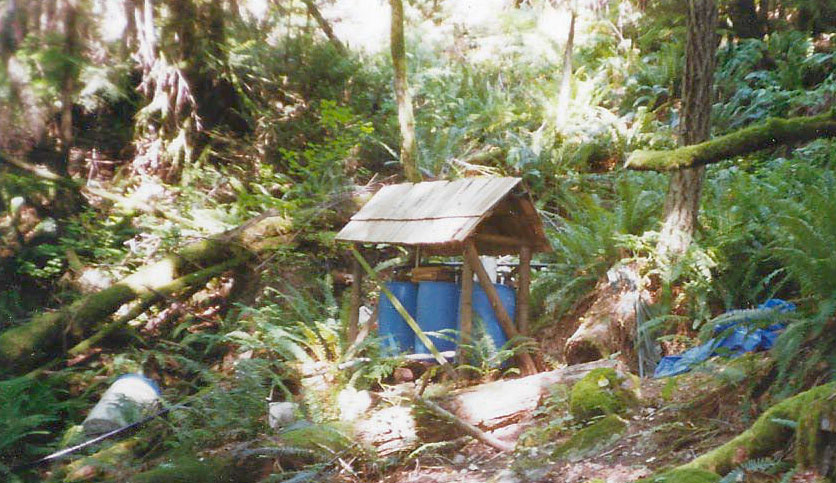
Cedar protection roof built over the three storage barrels in 1995.
Later a dead tree fell directly on the roof and totally destroyed it!
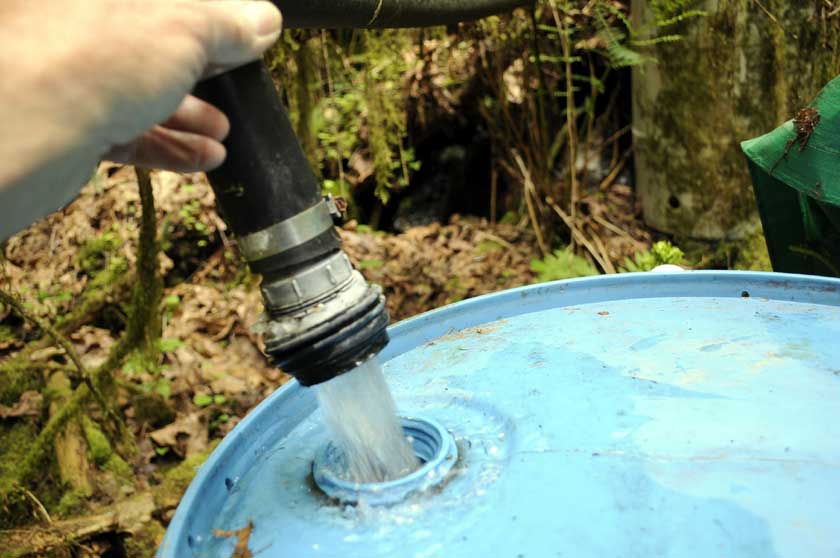
Feed from the Spring Weir about twenty feet up the hill.
Springs and spring water have long been a source of fascination and intrigue. In ancient times philosophers and scientists erroneously believed that springs were formed when saltwater from the oceans moved in tunnels under the land, was purified, and raised to the land surface. Springs were often considered mysterious and are a subject of considerable folklore.
A
Roman architect named Vitruvius proposed the theory accepted today. He
speculated that springs were fed by rainfall and snowmelt that soaked into
the ground and reemerged at another location. Since then, numerous studies
have confirmed Vitruvius’s theory.
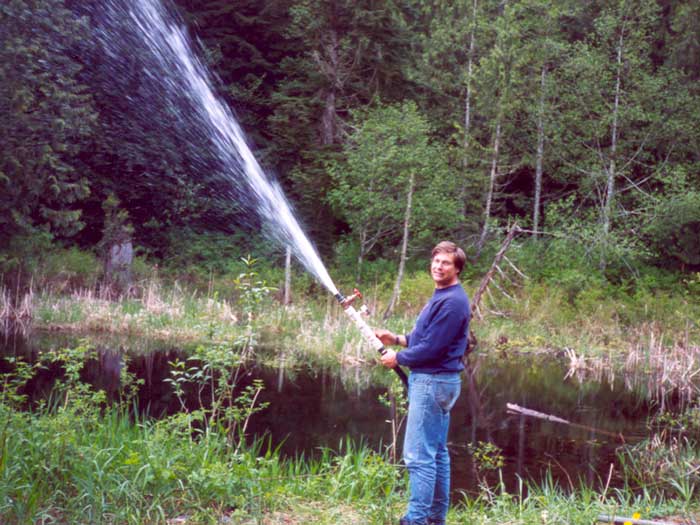
Back to 1994, first test of the system
Lots of pressure at the bottom of the hill at Popcorn Pond
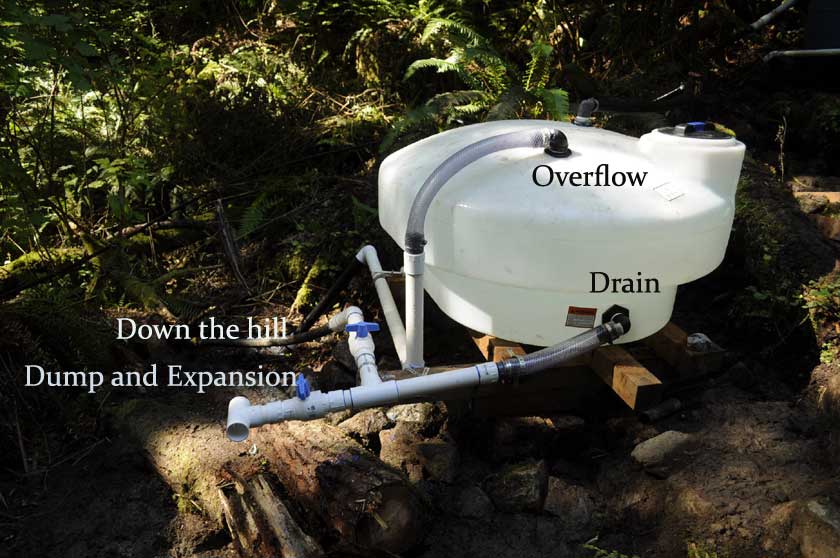
2016 upgrade
A pickup truck 210 Gal storage tank replaces three plastic barrels
This was the third of three upgrades to the spring water system by the tree farm since 1993
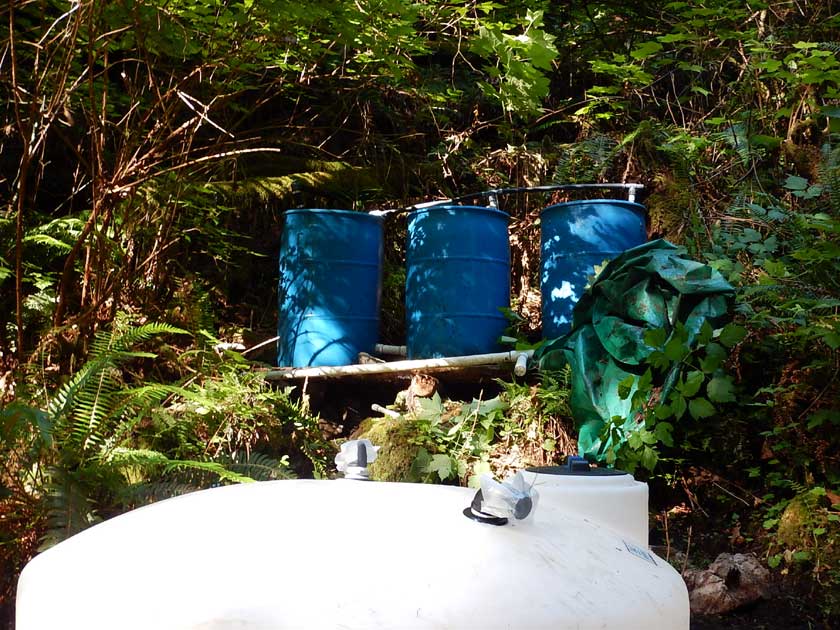
New tank in foreground, three settling barrels in background.
The spring is another twenty feet above the blue barrels
We retained the plastic barrels as a settling and filter system as some grains of fine sand would travel down the pipe from the weir.
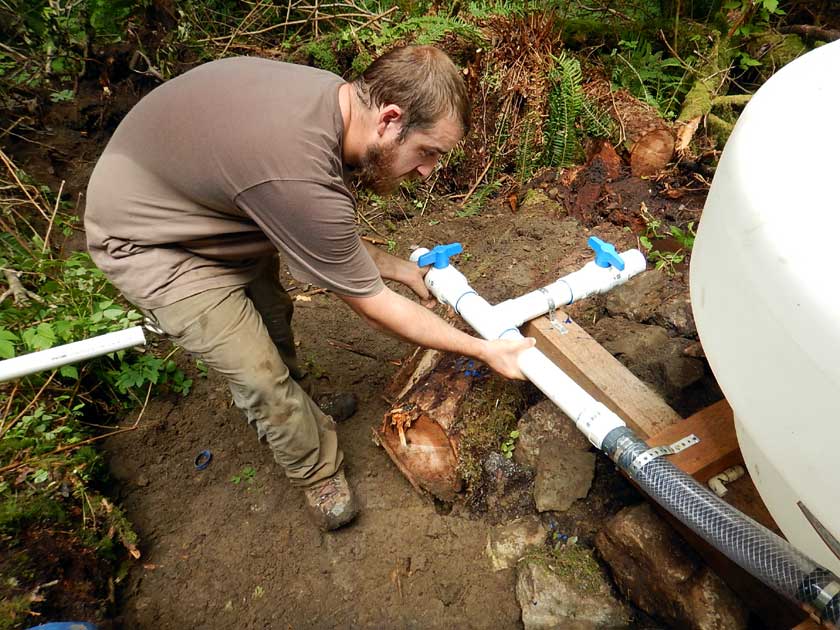
Plumbing up the new tank
That's our tree farm assistant Tom Becker getting everything lined up.
View a sketch of the layout
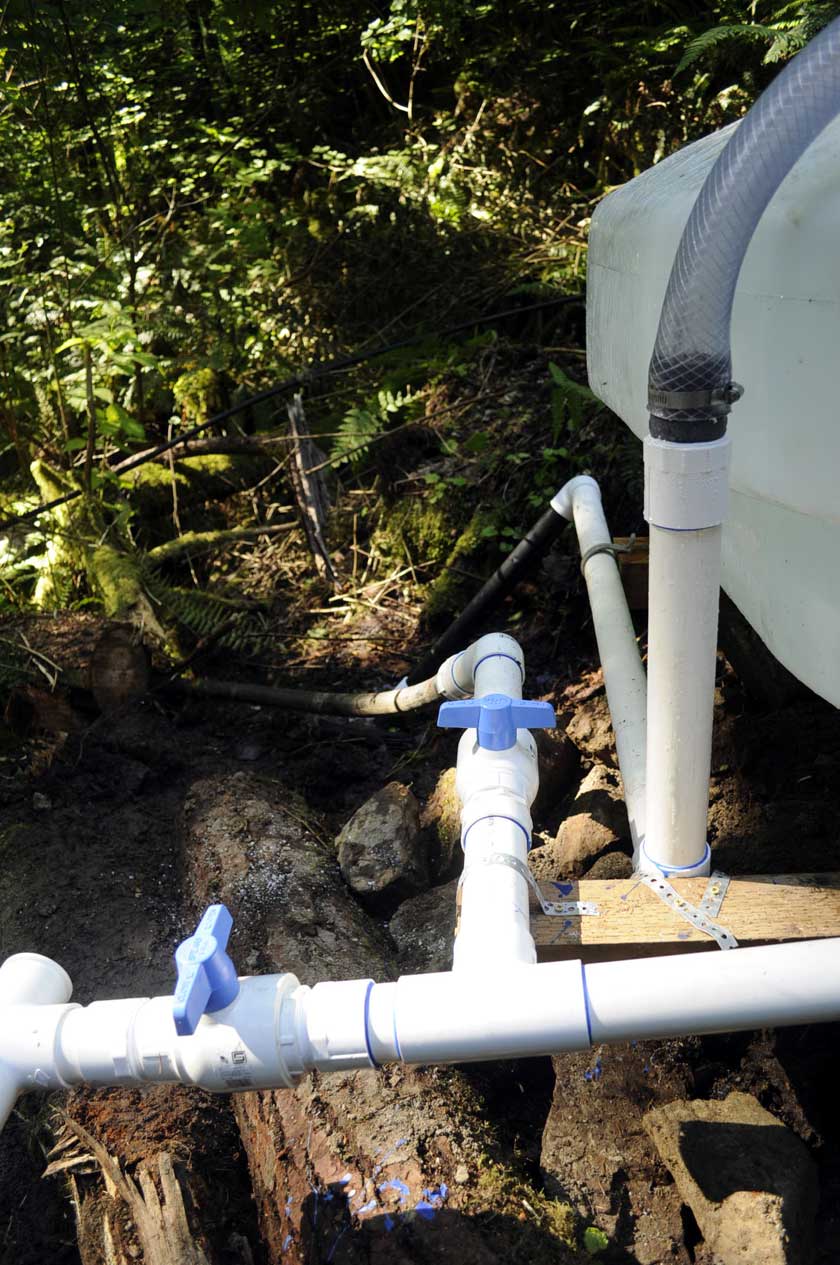
Close-up of the new overflow, shutoff and drain valves
Later we added a drinking fountain
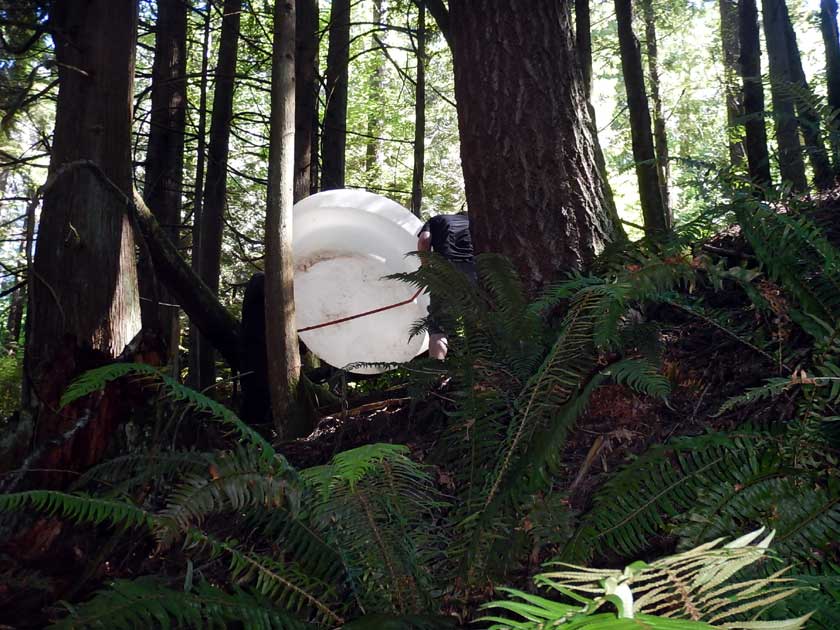
Carrying the 210 Gal Tank up the trail
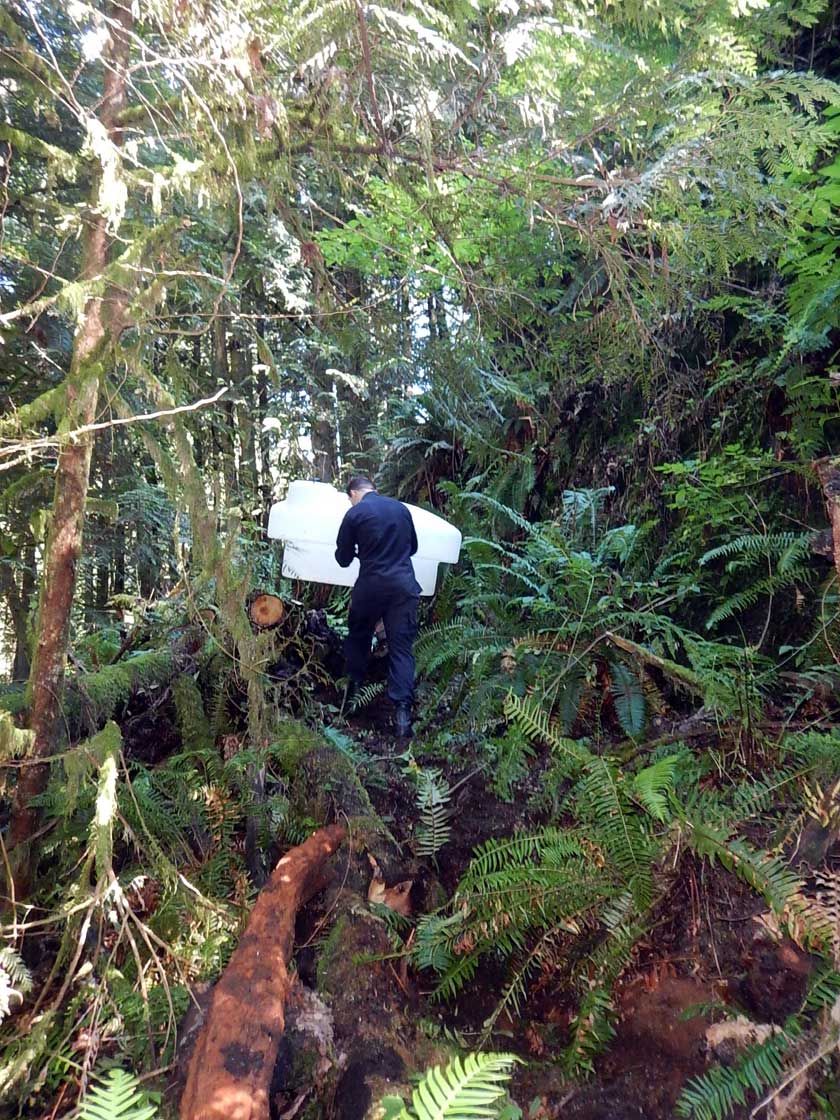
Two guys did it with much pulling and shoving

French Fountain runs off of extra water
We thought this would be a great way to always have fresh water coming down the pipeline.
The fountain was connected to the main line and we installed a drain pipe to siphon the overflow away. It was disconnected later due to continual clogging of the drain with tree needles and other debris.
Then we built a goldfish pond in the same area and had the same problems despite multiple design changes. Now we just crack a valve in the manifold by earl's house and dump a gal a minute via a 1" pipe into the bog about 250 ft below.
Pressure gage at the popcorn pond valve box
32psi at the bottom of the hill. View photo of the popcorn pond manifold before installation.
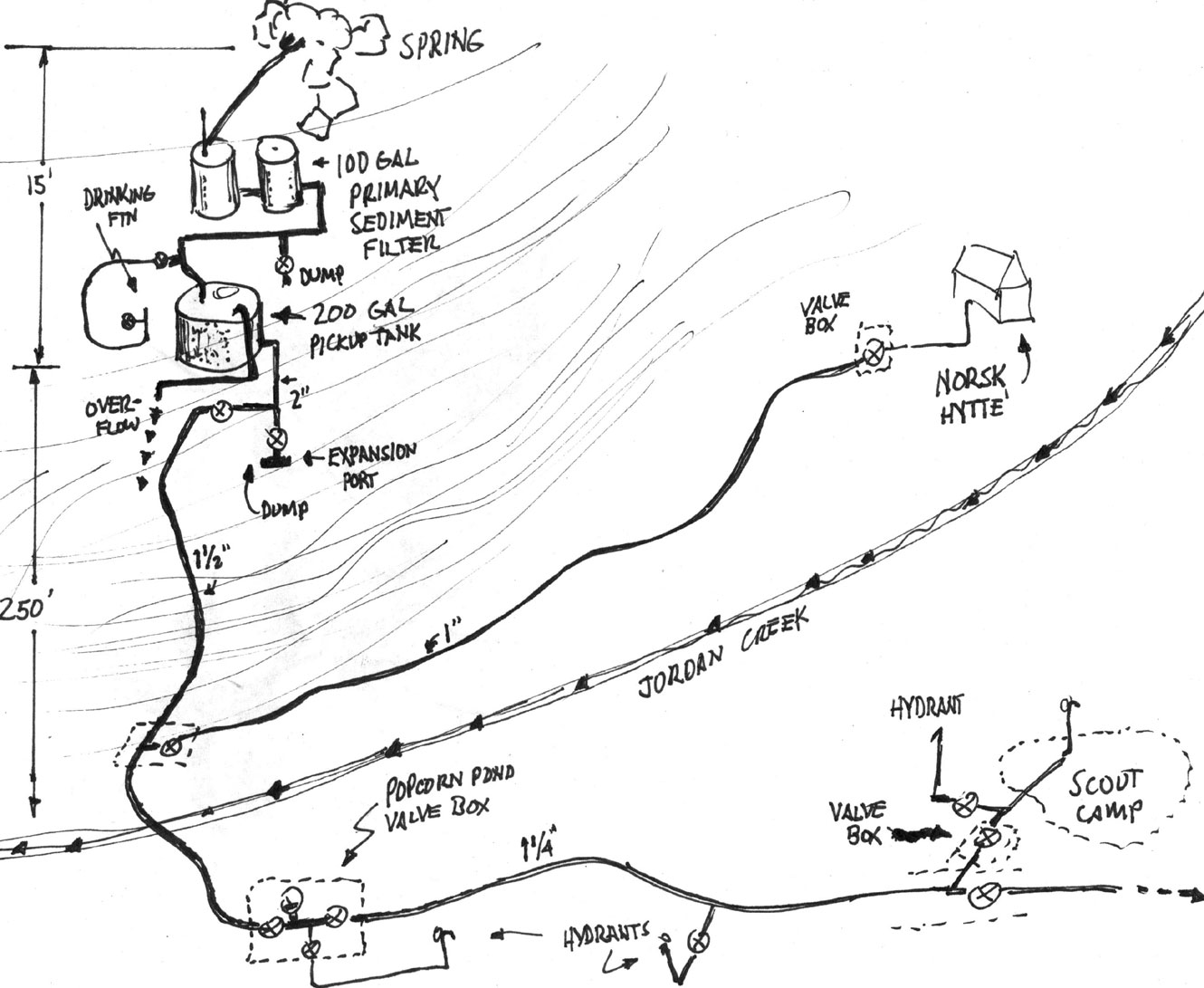
Pictorial of the spring system
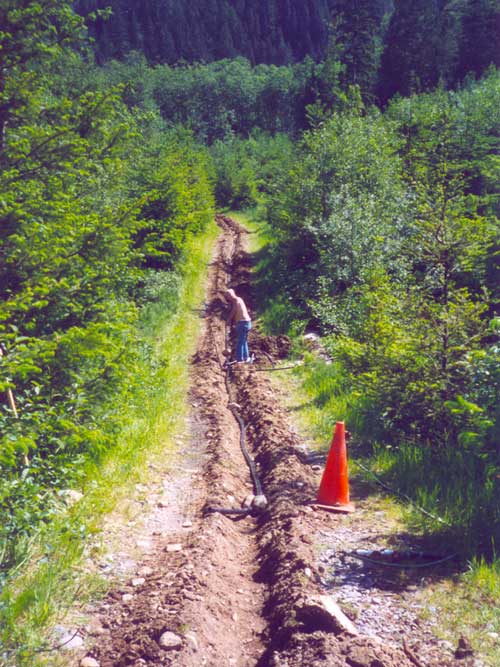
Installing the pipeline under the service road
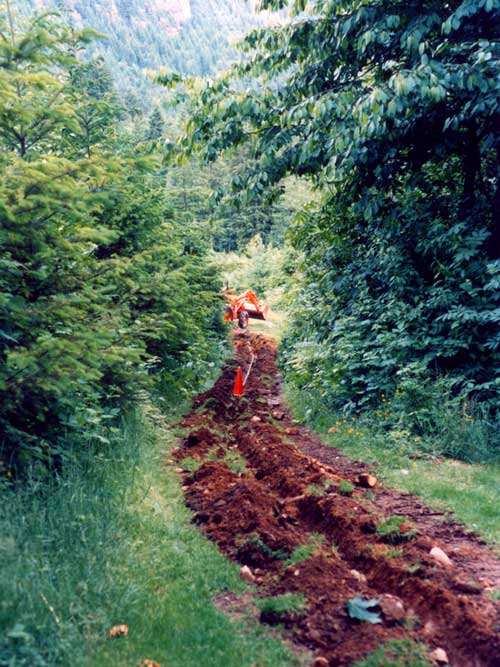
Installing more pipe
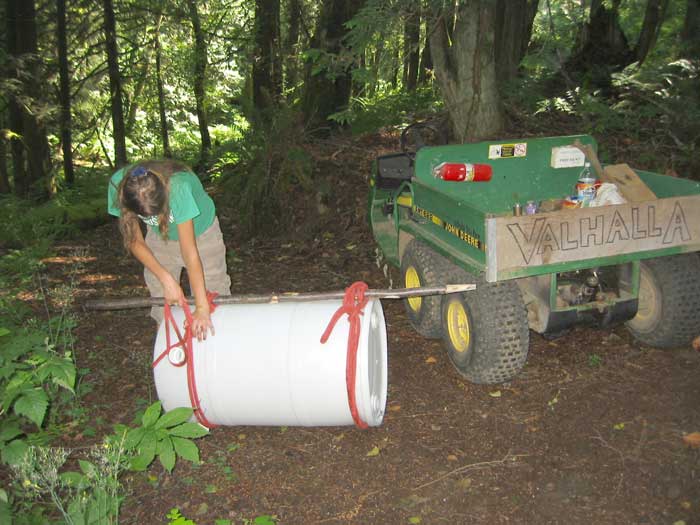
Here's Shannon making a setup to carry a barrel up the trail to the spring.
Spring Fed Water System Statistics
Length
of pipeline: .5 Mile
Diameter of pipeline: 1.25" poly
Total drop: approx 260 Ft
Storage capacity at spring: 250 Gallons
Filter System:
-- Screen weir at pickup
-- Progressive through three barrels
-- Line strainer at house
Also:
4 Hydrants with underground shutoffs
spaced along the pipeline
4 Campsite hosebibs
A spring is formed when natural pressure forces groundwater above the land
surface. This can occur at a distinct point or over a large seepage area.
Springs are sometimes used as water supplies and can be a reliable and
relatively inexpensive source of drinking water if they are developed and
maintained properly.
Spring water forced to the surface by elevated sources are artesian wells.
Non-artesian springs may simply flow from a higher elevation through the
earth to a lower elevation and exit in the form of a spring, using the
ground like a drainage pipe.
A gravity fed system functions thanks to gravity. It is thus by gravity that
the water stored in the tank goes down by its own weight inside the pipes
and runs out from the taps. But this system works only if the pipes and taps
are at a lower level than the water level at the starting point.
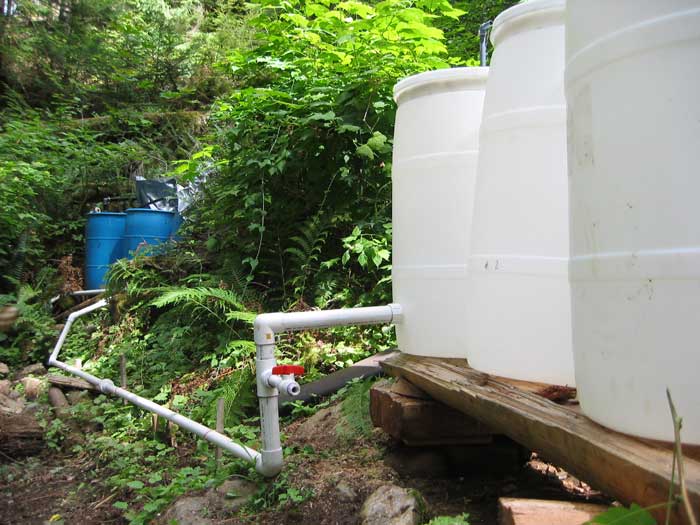
A modification in 2005 to add capacity.
It was later disconnected.
Line strainer with 30 micron filter
Installed at the bottom of the hill below Dave's house
This was built after a grain of sand became lodged in the washing machine water valve and caused a minor flood. View setup
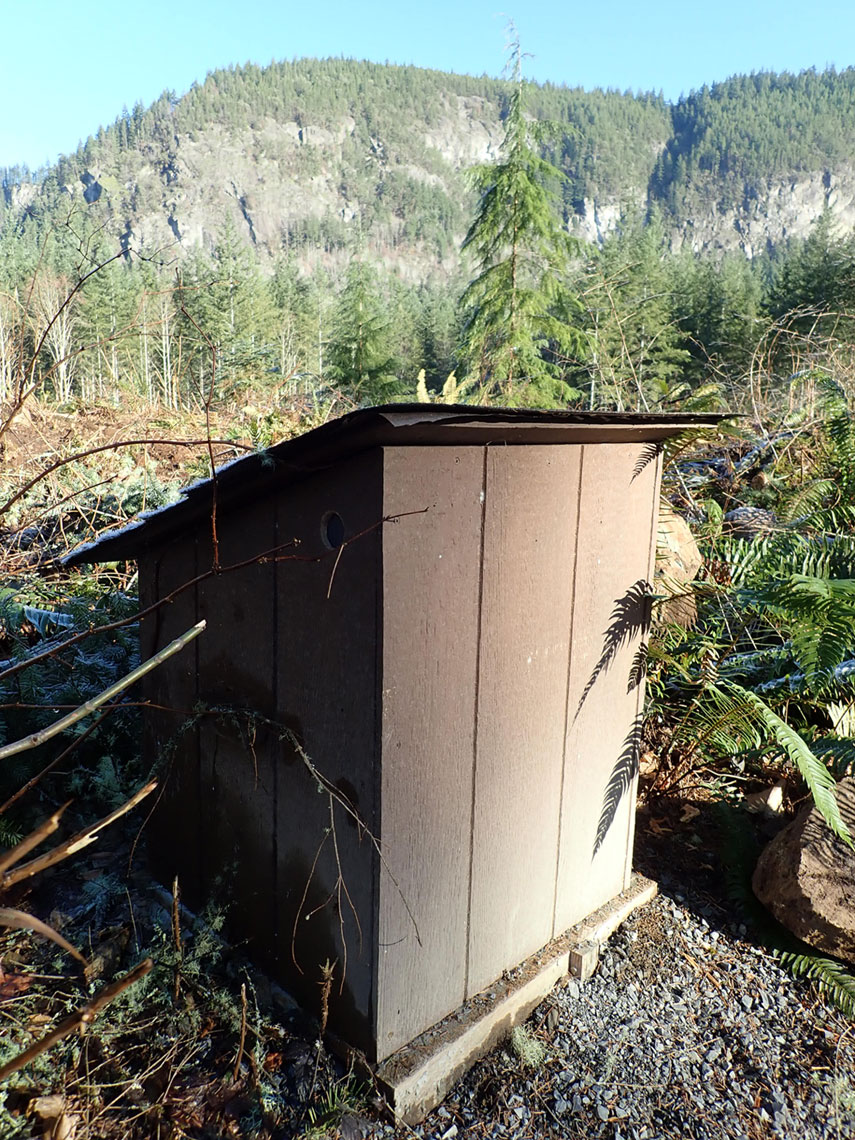
Small house to protect and insulate the line strainer assembly
We change the filter about every six months.
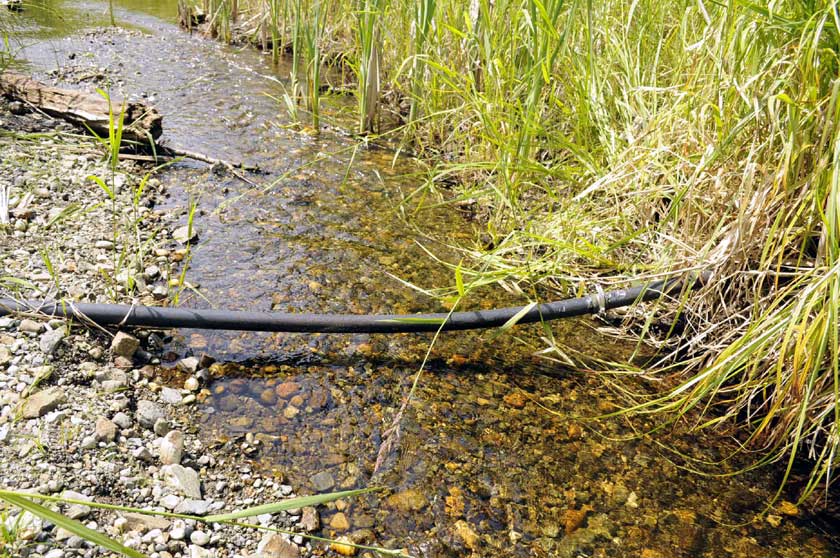
Pipeline Exposed 2014
Due to changes in Jordan creek's flow, the pipeline was exposed where it had
been underwater laying on the floor of popcorn pond.
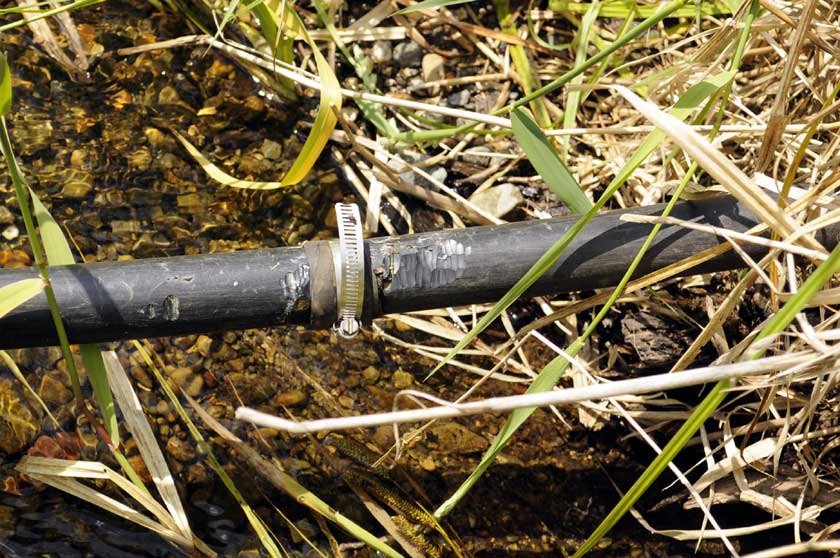
Beaver chewed the pipeline in 2015.
We fixed the hole with a clamp and a piece of inner tube.
Note the chew marks right of the clamp. He must have thought it was a tree branch.
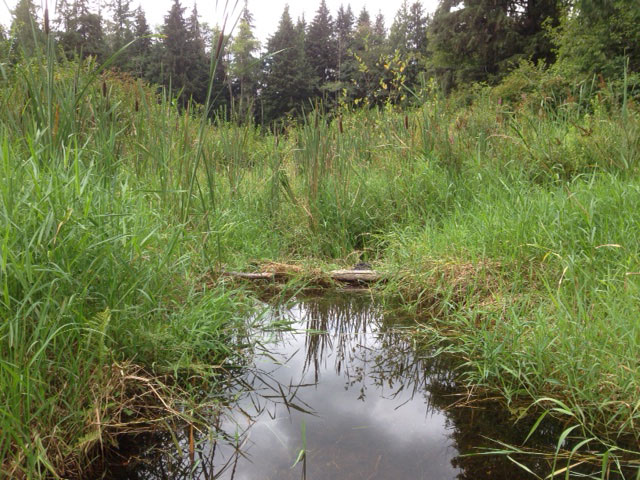
We suspended the pipe from a small cedar log and staked each end.
Later the beavers discovered it and used it to build a nice dam.
Air bubble at the 200 Gal tank outlet
Occasionally after a stoppage for maintenance or a winter problem we would have an air bubble that would accumulate at high points in the system pipelines. This would cause a complete stoppage of water flow. It was very frustrating until we figured it out.
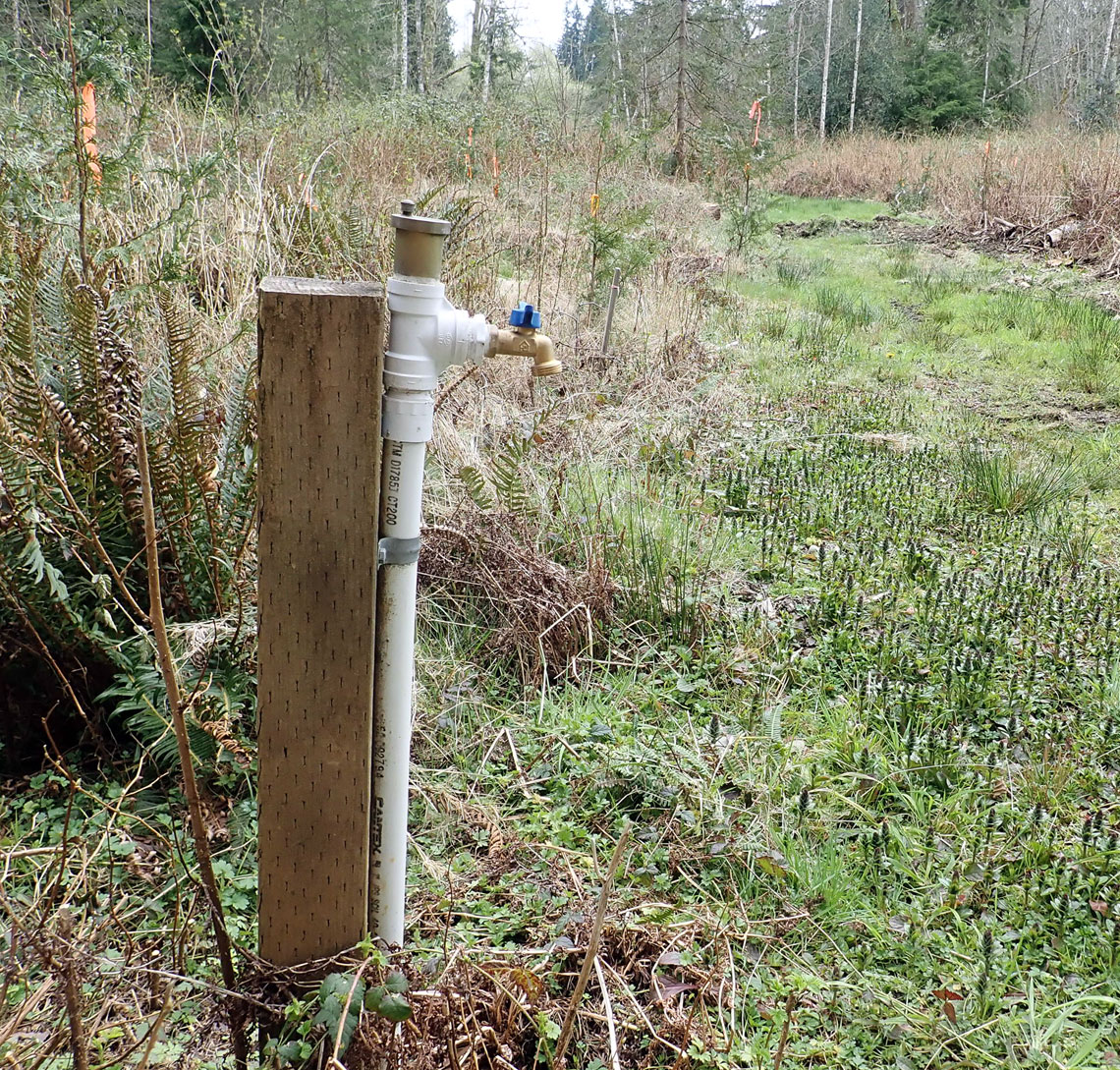
Air admittance valve (brass thing above faucet) at a high point in the system.
We have two of these valves that let air bubbles escape.
There is very little information available on spring-fed water systems. We had to just learn how to design and run the system by trial and error. It has mainly run trouble free for thirty years.
05/06/23